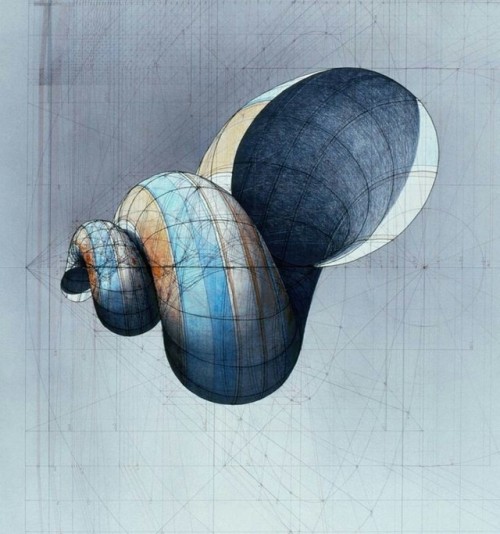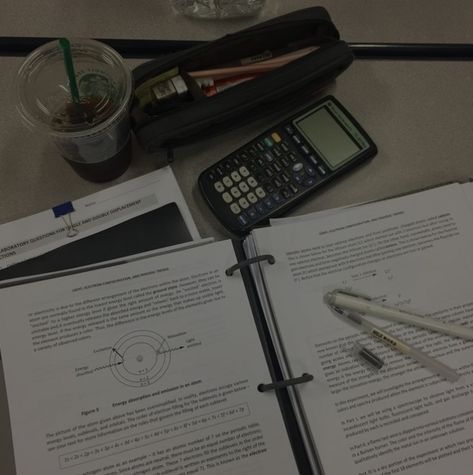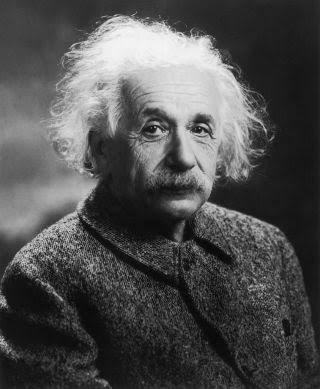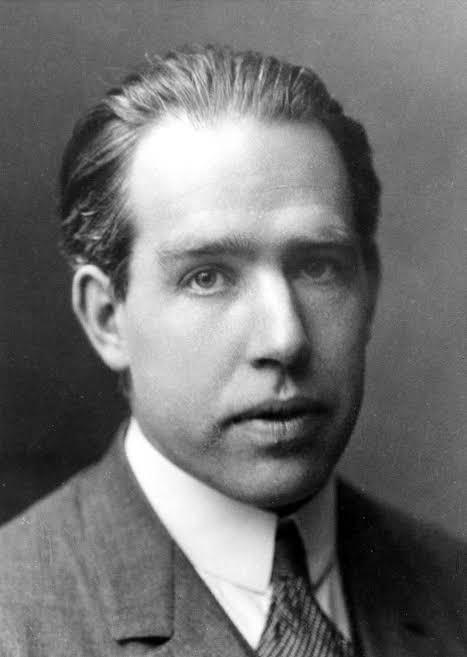
99 posts
Latest Posts by astrorelations - Page 3
Does time exists?
What is the actual reality of time?
Why does time follows “arrows”?


A delightfully concise animated proof of the sum of the arithmetic progression of the naturals.
Mathematics is beautiful. <3

Basic Math in Japanese

あけましておめでとうございます
I’m sorry for the lack of posts recently, I promise I didn’t forget about this blog.
I hope you all find this useful. I formatted the post this way so you can see the phonetic guide. Let me know if it is hard to read; I can upload it again without the guide.

The golden ratio is a reminder of the relatedness of the created world to the perfection of its source and of its potential future evolution.
Robert Lawlor
Image: Rafael Araujo



If unit vectors always scared you for some reason, this neat little trick from The story of i by Paul Nahin involving complex numbers is bound to be a solace.
It allows you find the tangential and radial components of acceleration through simple differentiation. How about that!
Have a good one!
** r = r(t), θ = θ(t)
I really want to get into math. What book do you recommend reading!
Great question! Here are some fun ones that are still informative and that really opened up my eyes to what math truly is:
How to Solve It by George Polya. This is a classic and the title speaks for itself: it is about how to reason mathematically.

Hyperspace by Michio Kaku. This one is mathy and sciencey. It is very geometrical and shows how our view of geometry has changed throughout history and how it has influenced science. Kaku is my favorite author.

Proof and Refutations by Imre Lakatos. Another classic. This one has to do with how mathematical proof advances our mathematical knowledge, in other words what professional mathematicians do. It is also surprisingly funny.

Other recommendations?
What she says: I'm fine
What she means: How come Rene Descartes is only remembered as a philosopher, and the guy who said "I think therefore I am"? The Cartesian plane is NAMED after him and still only hard mathematicians know that he invented it. Also, the whole Newton/Leibniz argument completely ignores the fact that Descartes allowed both of them to discover calculus, because of his theories/ideas and invaluable work with exponents - he literally laid the foundations of calculus but no one mentions him when discussing who invented it. He even invented the modern notation of writing powers as superscripts as well as the convention of using x,y,z for variables and a,b,c for constants. Most importantly he INVENTED ANALYTIC GEOMETRY and pulled everyone's collective heads out of their collective asses. He was one of the greatest mathematicians. But yeah, a cool philosopher too, let's let "Cogito Ergo Sum" be his only legacy.

Limits
Beautiful proofs (#4) - When Gauss was a young child...
The legend goes something like this:
Gauss’s teacher wanted to occupy his students by making them add large sets of numbers and told everyone in class to find the sum of 1+2+3+ …. + 100.
And Gauss, who was a young child (age ~ 10) quickly found the sum by just pairing up numbers:

Using this ingenious method used by Gauss allows us to write a generic formula for the sum of first n positive integers as follows:

World's most frustrated mathematician promising for the third time that he won't be dealing with your bullshit again

hmmm
I was an ordinary person who studied hard. There's no miracle people!
~ Theoretical physicist Richard Feynman

Saint Veronica with the Veil (Original piece by Mattia Preti c.1655-1660) Touched by Clayshaper

An Oxford student looking through a book on sale England, 1950

I love statues like this. How does someone have so much talent?
crazyest new anime
Unprecedented footage from Costa Rica shows tiny tropical lizard (Water Anole) “breathing” from an air sac suspended atop their snouts—an apparent scuba tank that helps them stay submerged for extended periods.
As the lizards lie motionless underwater, bubbles can periodically be seen appearing above their snouts. The bubbles quickly expand in size, and then shrink. It may very well be a form of underwater respiration, in which oxygen is pulled from the recycled air bubble on the lizard’s head, though further research will be required to validate these visual observations.
How many people can say they have played rugby with a Beluga whale? 🐳 🏉
Vampire amoeba




the mathematics students
crisp, grey mornings
the scratch of pencil on graph paper
working through complex problems just for the joy of it
baroque era piano music playing in the background
a love of patterns and puzzles
writing out your favorite proofs again and again
advanced math courses, sitting with the upperclassmen
the dusty green of an empty chalkboard
formulas scribbled on your hand in pen
going through a problem again and again until you understand it fully
carefully sketched graphs
short, bitten nails
ice cold water
hands marked with graphite
using math to take apart the world around you
doodling fractals on scratch paper
memorizing digits of pi just to show off to your friends
the moment of clarity when a problem fits together
hair clipped back out of your face
looking for fibonacci sequences in nature
watching a long and complicated equation simplify down to something short and compact

This is the Maiden of Llullaillaco, an Incredibly Well-Preserved Child Sacrifice from the Incan Empire around 500 years ago.
The Maiden of Llullaillaco, sacrificed at around the age of 15, was discovered with the other “Children of Llullaillaco” which includes a 6 year old girl and a 7 year old boy.
These mummies are so well preserved due to their position within a tomb atop a mountain within the extremely dry Atacama Desert. They are so well preserved, that their internal organs are intact, individual hairs on the arms can be seen and even one of the heart’s still contains frozen blood.
The deaths of the three children occurred by drugging the children with alcohol and coca, then placing them in the tomb where they eventually died in their sleep. This appears to have been a very well prepared process, as hair samples dictated that the children had extremely rich diets leading up to their deaths. The tombs were also adorned with elaborate dress and trinkets.
The boy however, faced a different death that could’ve indicated struggle or a different burial process. The boy was very tightly bound, and had dislocated hips and ribs and it appears he died under stress as the clothing contains both vomit and blood. Suffocation is the likely cause of his death due to the way he was bound.

𝙒𝙝𝙖𝙩 𝙝𝙖𝙥𝙥𝙚𝙣𝙚𝙙 𝙩𝙤 𝙆𝙚𝙣𝙣𝙮?
Whilst exploring the deserts of Nevada, avid hiker Kenny Veach came across what he described as an “M shaped Cave”. 47-year-old Veach was so excited about the discovery, that he wrote a lengthy YouTube comment on a video titled “Son of Area 51 Technician”, detailing his experience. Using the screen name SnakeBitMgee, Kenny explains how his “whole body began to vibrate” and that he got so scared, he decided to “hightail it out of there.” Kenny’s comment became viral, with other users encouraging him to go back there to explore the mystery of this unusual M shaped cave, so he did. Armed with a 9mm handgun and a video camera, Kenny explored the cave and uploaded this youtube video.
The video is over 20 minutes long and it shows a happy looking Kenny exploring the location where he found the cave. To his dismay, the mystery cave is gone. His video was met with criticism from his disappointed subscribers, and it seemed as though Kenny was just faking the whole thing. However, one comment was particularly ominous, as it foretold Kenny’s fate. It read: “No! Do not go back there. If you find that cave entrance, don’t go in, you won’t get out.”
Ultimately, that is exactly what happened. Or so we think. On November 10th, 2014, Kenny set out for his last hike. He told his girlfriend that he would be staying out overnight and would return the next morning. He never did. Kenny Veach was reported missing, and an extensive search commenced. A few days after he vanished, Kenny’s cell phone was found by the old mine-shaft featured on his YouTube video. After that, the trail goes cold.
There have been no sightings, nor any shred of forensic evidence that might give Kenny’s loved ones some hope. Could he have fallen to his death down there? That may be the case, although another theory suggests that he got lost in the newly discovered M shaped cave. Kenny was an experienced spelunker and hiker, but even experts can run into difficulty and perhaps mortal peril. To this day, neither Kenny Veach nor the M shaped cave have been found. Some people believe that he stumbled upon a secret entrance to Area 51, others think he succumbed to the elements. Whatever the truth, Kenny’s disappearance remains a frustrating mystery.
Albert Einstein:
“God does not play a dice with the universe.”
Niels Bohr:
“Stop telling God what to do with his dice.”
Stephen hawking:
“Not only does God play dice but...he sometimes throws them where they cannot be seen.”




1,000 Years of Scientific Texts From The Islamic World Are Now Online
Between the 9th and 19th centuries, Arabic-speaking scholars translated Greek, Latin and even Sanskrit texts on topics such as medicine, mathematics and astronomy, fostering a vibrant scientific culture within the Islamic world.
The library, a joint project of the British Library and the Qatar Foundation, offers free access to 25,000 pages of medieval Islamic manuscripts. Among some of the most significant texts:
The Book of Knowledge of Ingenious Mechanical Devices (1206 A.D.), which was inspired by an earlier, 9th-century translation of Archimedes’ writings on water clocks. Devices such as the “Elephant Clock” were the most accurate time-keeping pieces before the first pendulum clocks were built in the 17th century by the Dutch scientist Christiaan Huygens.
This is one of the only three recorded copies of an influential treatise on the construction and use of astrolabes by Abū al-Rayḥān Muḥammad ibn Aḥmad al-Bīrūnī (973-1048), containing 122 diagrams.
See more manuscripts at the Qatar Digital Library.
[via io9]
Scaling up a pen
Source
10 Things Einstein Got Right
One hundred years ago, on May 29, 1919, astronomers observed a total solar eclipse in an ambitious effort to test Albert Einstein’s general theory of relativity by seeing it in action. Essentially, Einstein thought space and time were intertwined in an infinite “fabric,” like an outstretched blanket. A massive object such as the Sun bends the spacetime blanket with its gravity, such that light no longer travels in a straight line as it passes by the Sun.
This means the apparent positions of background stars seen close to the Sun in the sky – including during a solar eclipse – should seem slightly shifted in the absence of the Sun, because the Sun’s gravity bends light. But until the eclipse experiment, no one was able to test Einstein’s theory of general relativity, as no one could see stars near the Sun in the daytime otherwise.
The world celebrated the results of this eclipse experiment— a victory for Einstein, and the dawning of a new era of our understanding of the universe.
General relativity has many important consequences for what we see in the cosmos and how we make discoveries in deep space today. The same is true for Einstein’s slightly older theory, special relativity, with its widely celebrated equation E=mc². Here are 10 things that result from Einstein’s theories of relativity:

1. Universal Speed Limit
Einstein’s famous equation E=mc² contains “c,” the speed of light in a vacuum. Although light comes in many flavors – from the rainbow of colors humans can see to the radio waves that transmit spacecraft data – Einstein said all light must obey the speed limit of 186,000 miles (300,000 kilometers) per second. So, even if two particles of light carry very different amounts of energy, they will travel at the same speed.
This has been shown experimentally in space. In 2009, our Fermi Gamma-ray Space Telescope detected two photons at virtually the same moment, with one carrying a million times more energy than the other. They both came from a high-energy region near the collision of two neutron stars about 7 billion years ago. A neutron star is the highly dense remnant of a star that has exploded. While other theories posited that space-time itself has a “foamy” texture that might slow down more energetic particles, Fermi’s observations found in favor of Einstein.

2. Strong Lensing
Just like the Sun bends the light from distant stars that pass close to it, a massive object like a galaxy distorts the light from another object that is much farther away. In some cases, this phenomenon can actually help us unveil new galaxies. We say that the closer object acts like a “lens,” acting like a telescope that reveals the more distant object. Entire clusters of galaxies can be lensed and act as lenses, too.
When the lensing object appears close enough to the more distant object in the sky, we actually see multiple images of that faraway object. In 1979, scientists first observed a double image of a quasar, a very bright object at the center of a galaxy that involves a supermassive black hole feeding off a disk of inflowing gas. These apparent copies of the distant object change in brightness if the original object is changing, but not all at once, because of how space itself is bent by the foreground object’s gravity.
Sometimes, when a distant celestial object is precisely aligned with another object, we see light bent into an “Einstein ring” or arc. In this image from our Hubble Space Telescope, the sweeping arc of light represents a distant galaxy that has been lensed, forming a “smiley face” with other galaxies.

3. Weak Lensing
When a massive object acts as a lens for a farther object, but the objects are not specially aligned with respect to our view, only one image of the distant object is projected. This happens much more often. The closer object’s gravity makes the background object look larger and more stretched than it really is. This is called “weak lensing.”
Weak lensing is very important for studying some of the biggest mysteries of the universe: dark matter and dark energy. Dark matter is an invisible material that only interacts with regular matter through gravity, and holds together entire galaxies and groups of galaxies like a cosmic glue. Dark energy behaves like the opposite of gravity, making objects recede from each other. Three upcoming observatories – Our Wide Field Infrared Survey Telescope, WFIRST, mission, the European-led Euclid space mission with NASA participation, and the ground-based Large Synoptic Survey Telescope — will be key players in this effort. By surveying distortions of weakly lensed galaxies across the universe, scientists can characterize the effects of these persistently puzzling phenomena.
Gravitational lensing in general will also enable NASA’s James Webb Space telescope to look for some of the very first stars and galaxies of the universe.

4. Microlensing
So far, we’ve been talking about giant objects acting like magnifying lenses for other giant objects. But stars can also “lens” other stars, including stars that have planets around them. When light from a background star gets “lensed” by a closer star in the foreground, there is an increase in the background star’s brightness. If that foreground star also has a planet orbiting it, then telescopes can detect an extra bump in the background star’s light, caused by the orbiting planet. This technique for finding exoplanets, which are planets around stars other than our own, is called “microlensing.”
Our Spitzer Space Telescope, in collaboration with ground-based observatories, found an “iceball” planet through microlensing. While microlensing has so far found less than 100 confirmed planets, WFIRST could find more than 1,000 new exoplanets using this technique.

5. Black Holes
The very existence of black holes, extremely dense objects from which no light can escape, is a prediction of general relativity. They represent the most extreme distortions of the fabric of space-time, and are especially famous for how their immense gravity affects light in weird ways that only Einstein’s theory could explain.
In 2019 the Event Horizon Telescope international collaboration, supported by the National Science Foundation and other partners, unveiled the first image of a black hole’s event horizon, the border that defines a black hole’s “point of no return” for nearby material. NASA’s Chandra X-ray Observatory, Nuclear Spectroscopic Telescope Array (NuSTAR), Neil Gehrels Swift Observatory, and Fermi Gamma-ray Space Telescope all looked at the same black hole in a coordinated effort, and researchers are still analyzing the results.

6. Relativistic Jets
This Spitzer image shows the galaxy Messier 87 (M87) in infrared light, which has a supermassive black hole at its center. Around the black hole is a disk of extremely hot gas, as well as two jets of material shooting out in opposite directions. One of the jets, visible on the right of the image, is pointing almost exactly toward Earth. Its enhanced brightness is due to the emission of light from particles traveling toward the observer at near the speed of light, an effect called “relativistic beaming.” By contrast, the other jet is invisible at all wavelengths because it is traveling away from the observer near the speed of light. The details of how such jets work are still mysterious, and scientists will continue studying black holes for more clues.

7. A Gravitational Vortex
Speaking of black holes, their gravity is so intense that they make infalling material “wobble” around them. Like a spoon stirring honey, where honey is the space around a black hole, the black hole’s distortion of space has a wobbling effect on material orbiting the black hole. Until recently, this was only theoretical. But in 2016, an international team of scientists using European Space Agency’s XMM-Newton and our Nuclear Spectroscopic Telescope Array (NUSTAR) announced they had observed the signature of wobbling matter for the first time. Scientists will continue studying these odd effects of black holes to further probe Einstein’s ideas firsthand.
Incidentally, this wobbling of material around a black hole is similar to how Einstein explained Mercury’s odd orbit. As the closest planet to the Sun, Mercury feels the most gravitational tug from the Sun, and so its orbit’s orientation is slowly rotating around the Sun, creating a wobble.

8. Gravitational Waves
Ripples through space-time called gravitational waves were hypothesized by Einstein about 100 years ago, but not actually observed until recently. In 2016, an international collaboration of astronomers working with the Laser Interferometer Gravitational-Wave Observatory (LIGO) detectors announced a landmark discovery: This enormous experiment detected the subtle signal of gravitational waves that had been traveling for 1.3 billion years after two black holes merged in a cataclysmic event. This opened a brand new door in an area of science called multi-messenger astronomy, in which both gravitational waves and light can be studied.
For example, our telescopes collaborated to measure light from two neutron stars merging after LIGO detected gravitational wave signals from the event, as announced in 2017. Given that gravitational waves from this event were detected mere 1.7 seconds before gamma rays from the merger, after both traveled 140 million light-years, scientists concluded Einstein was right about something else: gravitational waves and light waves travel at the same speed.

9. The Sun Delaying Radio Signals
Planetary exploration spacecraft have also shown Einstein to be right about general relativity. Because spacecraft communicate with Earth using light, in the form of radio waves, they present great opportunities to see whether the gravity of a massive object like the Sun changes light’s path.
In 1970, our Jet Propulsion Laboratory announced that Mariner VI and VII, which completed flybys of Mars in 1969, had conducted experiments using radio signals — and also agreed with Einstein. Using NASA’s Deep Space Network (DSN), the two Mariners took several hundred radio measurements for this purpose. Researchers measured the time it took for radio signals to travel from the DSN dish in Goldstone, California, to the spacecraft and back. As Einstein would have predicted, there was a delay in the total roundtrip time because of the Sun’s gravity. For Mariner VI, the maximum delay was 204 microseconds, which, while far less than a single second, aligned almost exactly with what Einstein’s theory would anticipate.
In 1979, the Viking landers performed an even more accurate experiment along these lines. Then, in 2003 a group of scientists used NASA’s Cassini Spacecraft to repeat these kinds of radio science experiments with 50 times greater precision than Viking. It’s clear that Einstein’s theory has held up!

10. Proof from Orbiting Earth
In 2004, we launched a spacecraft called Gravity Probe B specifically designed to watch Einstein’s theory play out in the orbit of Earth. The theory goes that Earth, a rotating body, should be pulling the fabric of space-time around it as it spins, in addition to distorting light with its gravity.
The spacecraft had four gyroscopes and pointed at the star IM Pegasi while orbiting Earth over the poles. In this experiment, if Einstein had been wrong, these gyroscopes would have always pointed in the same direction. But in 2011, scientists announced they had observed tiny changes in the gyroscopes’ directions as a consequence of Earth, because of its gravity, dragging space-time around it.

BONUS: Your GPS! Speaking of time delays, the GPS (global positioning system) on your phone or in your car relies on Einstein’s theories for accuracy. In order to know where you are, you need a receiver – like your phone, a ground station and a network of satellites orbiting Earth to send and receive signals. But according to general relativity, because of Earth’s gravity curving spacetime, satellites experience time moving slightly faster than on Earth. At the same time, special relativity would say time moves slower for objects that move much faster than others.
When scientists worked out the net effect of these forces, they found that the satellites’ clocks would always be a tiny bit ahead of clocks on Earth. While the difference per day is a matter of millionths of a second, that change really adds up. If GPS didn’t have relativity built into its technology, your phone would guide you miles out of your way!
Make sure to follow us on Tumblr for your regular dose of space: http://nasa.tumblr.com.
Albert Einstein teaching at Lincoln, the United State's first Historical Black University, 1946.




fuck it, its self indulgence saturday. anakin skywalker, but he was raised on mandalore, and also his mom is alive and well.



Pan (moon of Saturn) - March 07 2017
NASA/JPL-Caltech/SSI/Kevin M. Gill